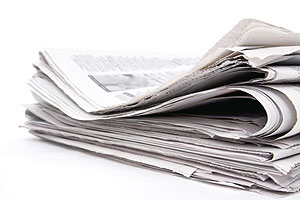COLUMN DEFINITION & EXPLANATION
What is the column? How to define column and explain?Here in the following trying to answer the above questions of Column definition in explanation of the column in details.
It is the personal opinion of the column writer that would not be tolerated in any other kind of story. The columnist can pass judgments, make recommendations, talk about himself or herself and otherwise violate most of the accepted tenets of news writing.
The style and approach in writing columns are neither serious nor deductive. Columns can be humorous, can report on local life and people or can deal with some specialty such as finance. Probably the most popular topic for columns is politics and government.
CHARACTERISTICS OF COLUMNS
The feature, the column and the editorial are sometimes hard to distinguish; qualities of each cross over and intermingle. But columns offer an opportunity for variety in content that no feature or editorial can approach.
The column always carries the writer’s by-line and. In some cases, the writer’s photograph Columns appear at regular intervals and usually in the same location in the publication; so loyal readers will know where to find them. Columns may be subject oriented. Such as those in hobbies or crafts Or the columns can be a reflection of the writer’s personality, offering humor, opinion, anecdotes.
Unlike feature, or editorial, which usually require considerable background and experience, columns can be written by the newest member of the stall
TYPES OF COLUMN
How many types of columns are written in Print media like a newspaper in Urdu or English language. Columns, like news stories, may fit into several pigeonholes at the same time. For what it may be worth, let us try to set up some classification for column writings.
Major Types of columns can be divided into the following:
(a) Reporting in Depth Columns:
(b) ” I Think” or Opinionated Columns
The columnists, either because of extensive training, long time observations, or sheer lack of modesty, set themselves up as experts and then expound their opinions for the general public. The self-opinionated experts try to compensate in the heat for what they cannot provide in light.(c) Gossip Columns
Practically everybody likes to learn a juicy bit of gossip; one whole field of column writing is built on these characteristics. While column contains little except its titillating value, this need not be the writer” s exclusive domain. The uncovering of a government scandal may have profound (and beneficial) ramifications, for instance.(d) Humorous Columns
In this type the columnist tries to find the humorous aspect in life and write an article that will amuse readers. Sometimes these humorous columns spotlight an event more clearly than thousands of words of expounding and explaining.
WRITING COLUMNS:
How to write columns? Or How to write a column in the print media or newspaper? Here are few steps to follow for a good or Best Column writing.
- Structure
Pointing out different structures of columns may seem a useless exercise, since column writing is so individual. However, the following Structures are more common
- Q & A
The questions come from readers and the answers are supplied by the columnist.
- Grab bag
Some columns are a collection of events coming up, awards handed out, gossip and anything else too small for a headline. However, more newspapers are abandoning these for a thematic grab bag.
- Anecdote
Columns built around a single anecdote take on the character of a mini-feature.
- Feature
A feature, usually a profile, is a common column format. The difference between this and a regular feature is the greater length of the regular feature, and, sometimes, personal involvement of the columnist indicated by use if personal pronoun.
- Instructive
Informal style. The directions are always carefully written to eliminate ambiguity and writers often give the material an “idiot run” to be sure there are no steps missing.
- STYLE
The successful columnist is one who has developed a personal style, but there are some general principles that can be followed. They are given below:
- Use Humour
Humorous touch in style creates interest and communicates very complex message in a light way.
- Express private thoughts
Let the public know that you share their concerns, pleasures and fears.
- Personalize vour column
Use specific names, places, events. Let readers identify with you as you wander through the community. Share ideas that you have picked during golf matches or card games.
- Be creative
Experiment with words and their meanings. Play with sentences and paragraph structure. Build images. Be descriptive.
- Use dramatic elements
Study good storytellers. Learn how to build suspense to a climax.
- Borrow techniques from fiction
Description and dialogue can recreate scenes and sharpen story lines.
- Sharpen vour vocabulary
Search for precise words. Don’t be content with coming closer to the meaning of a word or sentence. Take the extra time with your writing to be exact.
- Learn to listen U others
Careful innovation and keen perception result in evocative writing. Ask questions and probe other’s interests.
- Write for others
Though the subjects you choose are your own, your responsibility is to please your audience.
